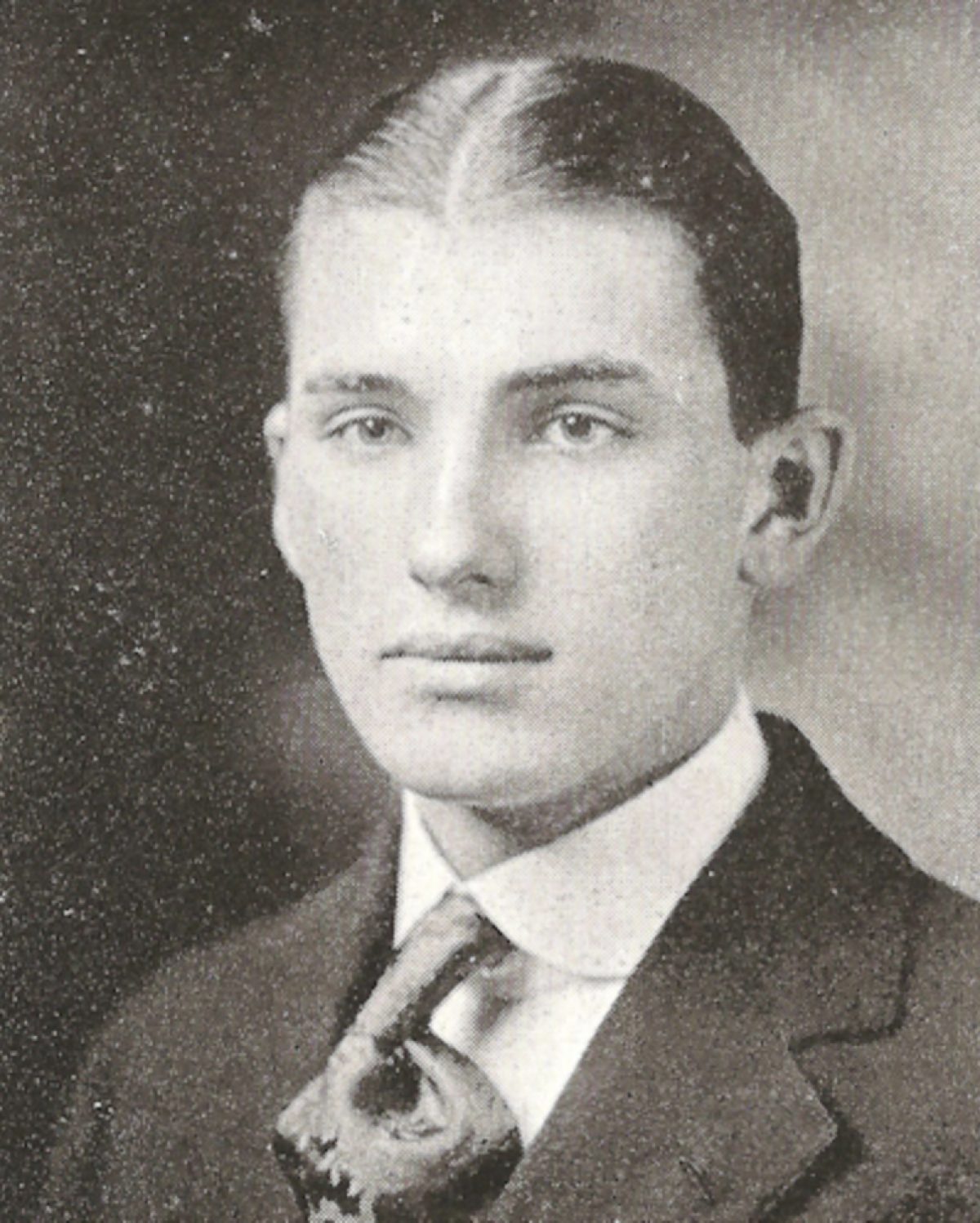Introduction
On December 11, 1922, a Daily Princetonian article trumpeting “IMMIGRATION DANGERS” announced the formation of a Princeton chapter of the Immigration Restriction League (IRL).[1] The organization, founded in 1894, advocated for a mandatory literacy test for all immigrants entering the United States, a test designed to exclude people lacking the white, Anglo-Saxon, Protestant descent the IRL’s Harvard-educated founders considered most desirable. The IRL rapidly spread beyond its origins in Boston, and chapters of the organization sprouted up in several major United States cities, including New York and San Francisco.[2] Two decades later, when the IRL reached Princeton, its local chapter resulted in a curious cross-generational collaboration between retired admiral Caspar Goodrich, biology professor Edwin Conklin, politics professor William Starr Myers, and a fresh-faced undergraduate named Brooks Emeny.[3]
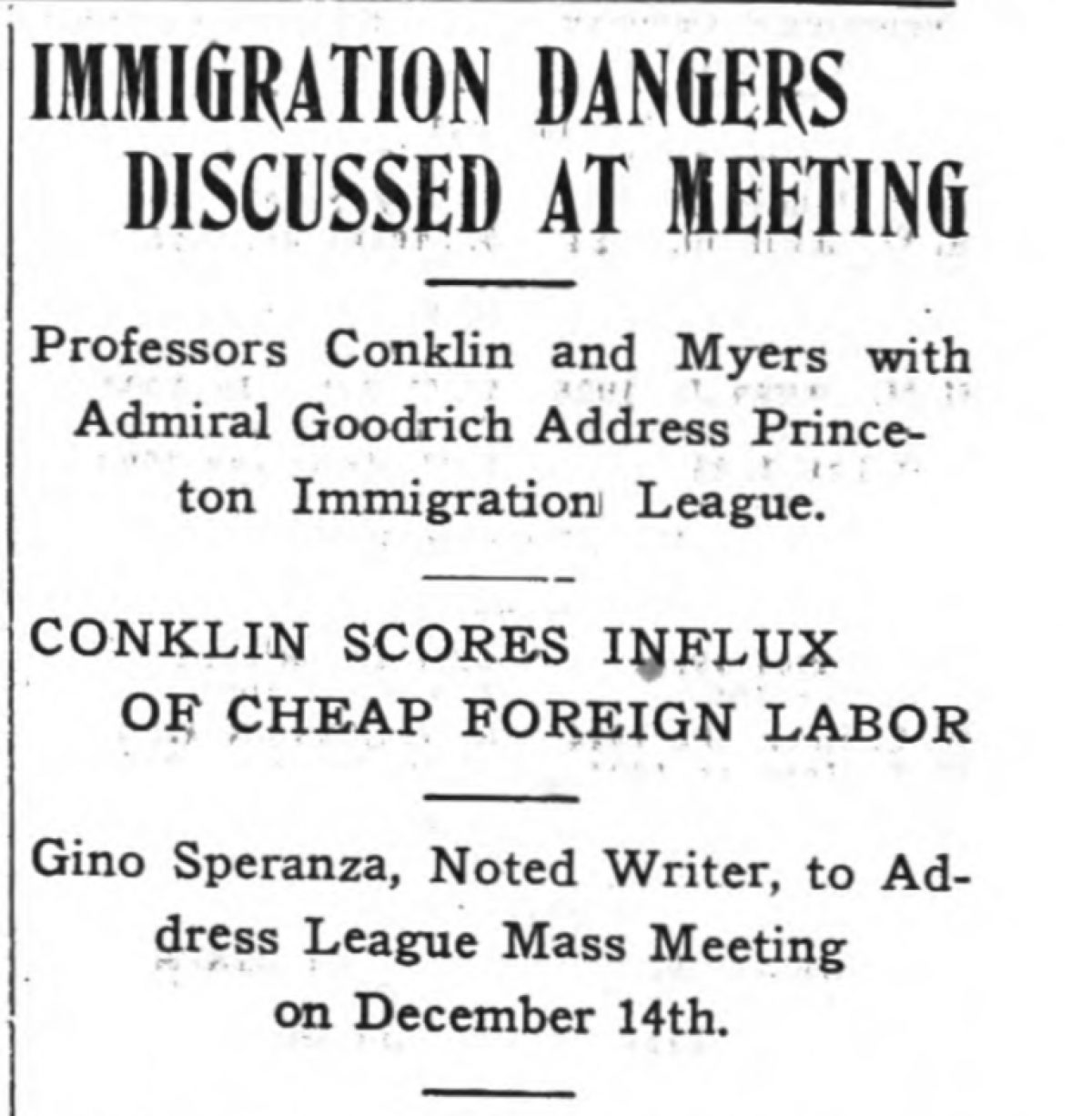
Daily Princetonian article describing an Immigration Restriction League meeting.
View Primary Sources
Princeton’s IRL chapter existed for only a brief period between December 1922 and May 1924. Primarily supporting the anti-immigrant Johnson-Reed Act as it made its way through the halls of Congress, the chapter grounded its opposition to immigration into the United States in racial eugenics, support for white imperialist rule, and fear of political radicalism. Although the impact of the group is uncertain, the Immigration Restriction League nonetheless formed a part of the campus’s political mosaic during a time of heightened racism both at the University and throughout the nation.
A Climate of Exclusion
By the end of World War I in 1918, the national Immigration Restriction League had gotten what it wanted. A bill mandating a literacy test for immigrants to the United States passed Congress, despite three prior vetoes from then-President (and former Princeton president) Woodrow Wilson. Notwithstanding the passage of the national legislation, however, IRL leaders were disappointed with the test’s overall efficacy. Large numbers of southern and eastern European immigrants continued to enter the United States, to the chagrin of IRL members, who viewed them as culturally and intellectually inferior to white Protestant Anglo-Americans.[4]
Nonetheless, because the organization had succeeded in accomplishing its founding purpose—and due to the recent death of one of its leaders, Prescott Hall—membership in the organization steadily diminished throughout 1921. By year’s end, the IRL as a national organization was largely defunct.[5] Yet Princeton’s local chapter didn’t form until December 1922, a seeming anomaly amidst the overall national decline in IRL activity.
However, the rise of the Princeton IRL chapter tallies with national political trends as well as events at the University itself. The early to mid-1920s were, in the words of one historian:
… one of the most reactionary moments in American history … defined by rising xenophobia and anti-Semitism, widespread political repression, the emergence of the Ku Klux Klan as a genuine mass movement, [and] the growing prominence of eugenics and scientific racism.[6]
This prevailing political climate influenced Princeton as well as other elite institutions, which began to implement exclusionary admissions policies toward Jewish students. Beginning with the creation of the “Director of Admissions” role in 1922, Princeton administrators took the lead in combating the “Jewish problem” by mandating that an alumni interview and character reference be included as part of the application process.[7] Now ubiquitous in American college admissions, these policies were originally implemented to exclude students deemed “undesirable from the point of view of character,” a designation that primarily targeted people of Jewish descent but also extended to other non-white applicants.[8] Administrators associated Jewish students with many of the same stigmas the Princeton IRL attached to immigrants, including an assumed involvement in radical politics that represented a threat to the status quo. The administration’s policy changes were met with “strong student approval,” exemplified by a piece in the Daily Princetonian praising the changes.[9]
A short-lived organization on campus, the Princeton IRL chapter was never documented in any of the club listings in the various year-end student publications, including the student yearbook known as the “Bric a Brac.” Thus, it is difficult to tell how large the group’s membership may have been, or how influential it was on campus. But members of the Princeton IRL did receive public mention in the student-run Daily Princetonian.
This, along with the popularity of restrictive admissions policies on campus, indicates that the nativist and anti-immigrant politics of the Immigration Restriction League resonated with at least some segment of the Princeton community. The IRL was just one particularly virulent outgrowth of the racial animus that had long existed on campus.
The Johnson-Reed Act of 1924
Princeton’s IRL chapter concerned itself largely with convincing the campus community that immigration was not only undesirable but also an existential threat to the social fabric of the United States. The IRL hosted numerous public events and meetings focused on the dangers of foreign immigration into the country. In addition to its initial lectures in 1922, from which the Daily Princetonian quoted at length, the IRL held public lectures in November and December of 1923 and January of 1924 as well.

Daily Princetonian article describing an anti-immigration speech by Princeton professor Edwin Conklin.
View Primary Sources
The Princeton IRL followed the legislation-oriented approach of its Boston-based predecessor and focused mainly on promoting what would become known as the Johnson-Reed Immigration Act of 1924. Presumably, the uptick in IRL activity between November 1923 and January 1924 can be attributed to the group’s support of the Johnson-Reed bill, which was being debated in Congress at that time. Similarly, the group’s eventual disappearance from campus publications after May 1924 coincided with the passage of the bill that month.
The “Johnson Bill” was, at the time, one of the most restrictive immigration policy proposals in United States history. The bill set quotas on the annual immigration of “races and people” based on the population numbers recorded in the 1890 census: only 2% of any non-Western group recorded in the census would be permitted to enter the United States per year.[10]
The Johnson Bill’s use of the 1890 census was important because of its incredibly narrow definition of a native citizen. That year’s census considered only descendants of the country’s white population before 1790 to be of “native stock.” Even western Europeans who had arrived after 1790 were classified as “foreign stock”—as were African Americans and Native Americans who had lived in the country from its colonial days and before.[11] In addition, the 1890 census predated major waves of southern and eastern European immigration to the United States, meaning that the population numbers for those groups were already extremely low. Nor did the Johnson-Reed Act provide immigration quotas for “races and peoples” not assigned a national origin—in other words, almost all non-Europeans. Instead, the law banned Arab and Asian immigration wholesale and severely throttled African immigration.[12]
Upon its passage, the 1924 bill dramatically altered immigration policy in the United States, and many of its effects lasted until Lyndon Johnson’s administration passed the Immigration and Nationality Act more than four decades later, in 1965.[13]
Founders of the Princeton IRL
Princeton’s IRL chapter likely achieved some level of publicity due to the social prominence of its two founders: a retired U.S. Navy rear admiral named Caspar F. Goodrich (1847-1925) and the “noted biologist” and University professor Edwin G. Conklin (1863-1952).[14]
Goodrich was not a Princeton professor, yet he found a way to involve himself extensively in the day-to-day affairs of Princeton’s campus. A graduate of the U.S. Naval Academy’s class of 1864, Goodrich was a veteran of the American Civil War and the commandant of the Princeton Naval Training Unit from 1918-1919. The Naval Training Unit was one of many units of its type at Princeton, whose student body quickly mobilized to prepare for war after the United States announced its entrance into World War I.
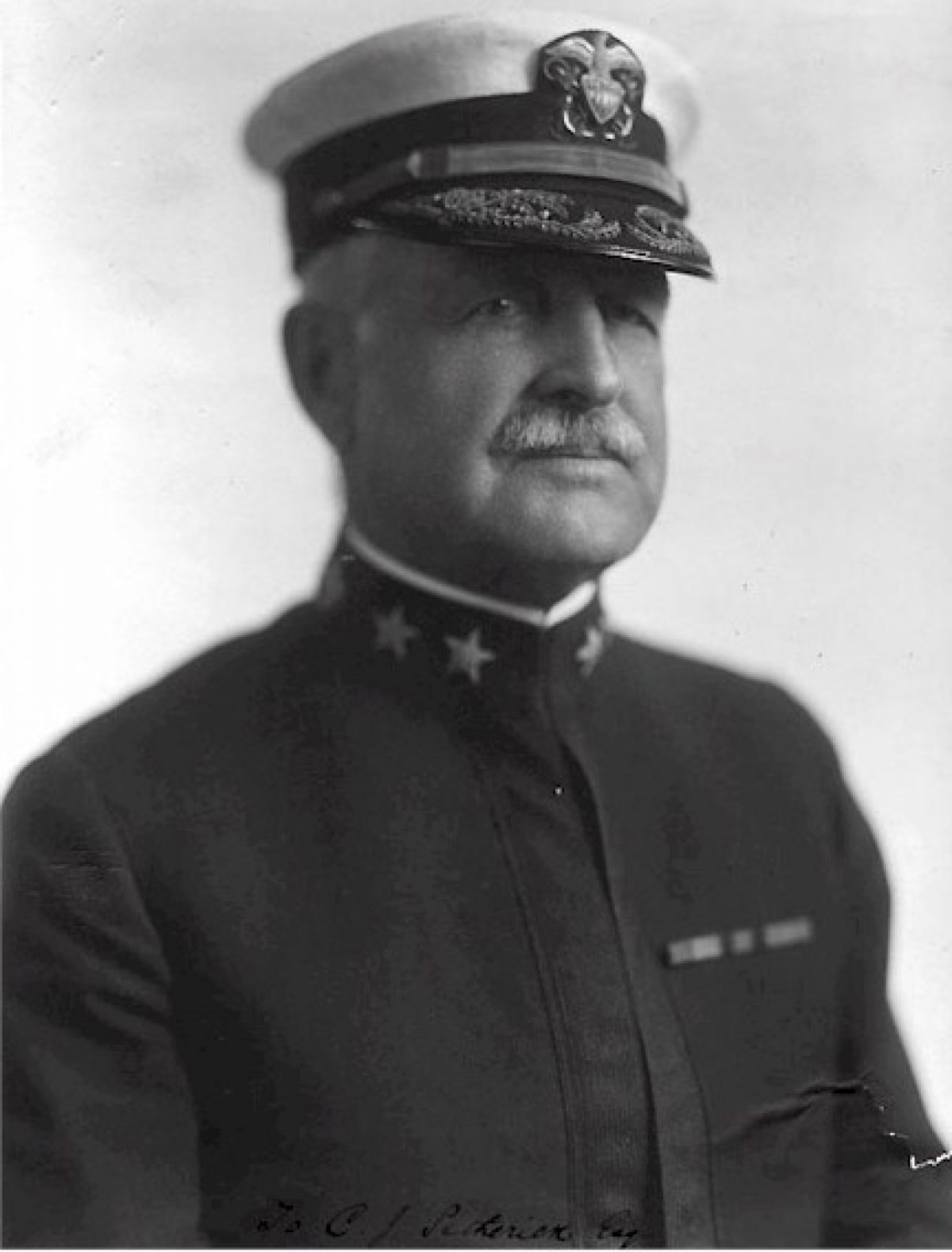
Rear Admiral Caspar F. Goodrich, Princeton resident and co-founder of the Princeton Immigration Restriction League.
View Primary Sources
After a brief stint as a military recruiter on campus, Goodrich lived in town until his death in 1925 and continued to keep himself busy at the university. In addition to founding and zealously promoting the campus IRL chapter, he was a popular figure among students. Goodrich participated in a wide range of University activities, from delivering a lecture on hydroelectric engineering to presiding over a dedication ceremony that named the trees outside of Pyne Hall after various “naval heroes.”[15]
Edwin G. Conklin was brought to campus by then-University president Woodrow Wilson to chair the biology department in 1908.[16] Conklin was a notorious proponent of eugenics and social Darwinism, which did not prevent him from garnering great recognition in the field of biology. Conklin’s work drew praise from the American Philosophical Association, and he won election to the National Academy of Sciences.[17] To this day, the Society for Developmental Biology grants the Edwin G. Conklin medal to a new recipient each year.[18]
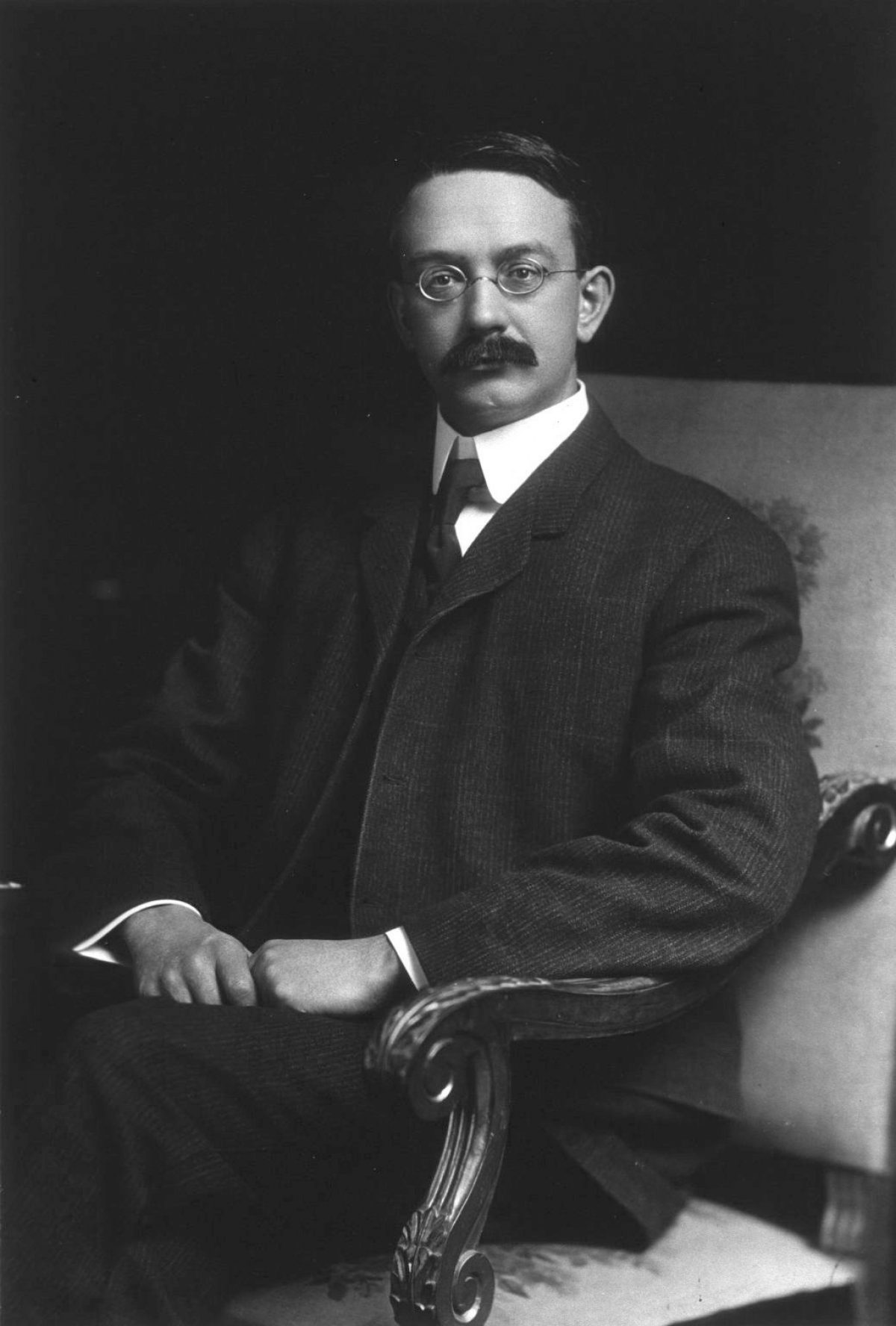
Professor Edwin G. Conklin, a leading proponent of eugenics and co-founder of the Princeton Immigration Restriction League.
View Primary Sources
In a November 1923 article in The Daily Princetonian, Goodrich and Conklin discussed their shared political goals: numerical caps on immigration. The two IRL leaders differed, however, in their beliefs about why immigration was such a pressing issue. Goodrich focused on the “character” of immigrants coming from eastern and southern Europe and the deleterious effects he believed they would have on the moral purity of white American citizens:
These immigrants are unfortunately docile, subservient, of low morals and character, and by infusing the blood of such peoples into the American race our stock tends to become lower in morals, character, ability, and ambition.[19]
In effect, Goodrich viewed these immigrants as insufficiently independent and enterprising to integrate into the United States.
Conklin, for his part, focused on the “biological aspects” of immigrants—in other words, on his abiding concern with eugenics and the mental superiority of white people. In his introductory speech on behalf of the IRL, Conklin declared:
The average mental capacity of the American is being lowered by undesirable immigration. Mental characteristics as well as physical are inherited, and the psychological tests conducted by army officials showed the native born citizen mentally superior to the foreigner.[20]
Conklin’s fear of non-white and non-western European immigration found its expression in an evolutionary framework. His concern lay with the dilution of the supposedly superior genetic traits of white Americans.
By employing different justifications for immigration restriction, Goodrich and Conklin hoped to attract a wide variety of supporters their cause. Although it is difficult to know the extent to which they succeeded, Conklin and Goodrich nonetheless managed to draw a heterodox group of Princeton community members to their cause.
A Study in Racial Attitudes
By the arrival of autumn 1923, the IRL had attracted two more prominent Princeton supporters, both mentioned in the Daily Princetonian: an undergraduate named Brooks Emeny (class of 1924) and politics professor William Starr Myers—another faculty hire of Woodrow Wilson, who brought Myers to campus in 1906.[21] Myers spoke on the subject of immigration at multiple IRL events, joined not only by Princeton IRL regulars like Conklin and Goodrich but also by Congressional Immigration Committee member Judge John C. Box and visiting professor F.H. Giddings of Columbia University.[22] Although eclipsed by the more vocal and prominent Goodrich and Conklin, both Myers and Emeny left behind revealing archival records that document their opinions about race, citizenship, and the nation.
Professor Myers himself regarded his IRL activities as unremarkable. In his diary, he wrote of his appearance at an IRL event on November 26, 1923 in a perfunctory manner, tersely noting that at “4:30 I was at a meeting of the Immigration Restriction League in 46 McCosh. Prof Conklin, Admiral Goodrich & I spoke.”[23]
On the subject of immigration restriction, Myers favored arguments about the inferiority of immigrants and non-white people based on their presumed association with socialism and radical labor activism. The politics professor seemed perturbed by the recent revolution in Russia and the increase of labor agitation in the United States. He insisted that the labor radicalism and Catholicism of the newest waves of immigrants would cause “America [to] los[e] a fundamental and cultural basis of its existence.”[24]
Like Conklin, Myers was also influenced by early studies of IQ carried out by the U.S. military, which used its own recruits as test subjects. In a speech delivered to the Army War College in Washington, D.C., on September 21, 1923—just a few weeks before his appearance at IRL events on campus—Myers fixated on the idea that “since 1900 we have admitted 200,000 immigrants with less intelligence than the American negro.”[25] He fretted further over the possibility that the immigration would cause the United States to grow weak “from an intellectual standpoint.”[26]
Again like Conklin, who directly applied his academic studies in biology to the question of immigration, Myers’s scholarship and his political views converged. As a historian of the Republican Party, much of Myers’s published work discussed the Ku Klux Klan and questions of race. In a 1913 journal article, Myers wrote that the “negro must be recognized as one of an inferior, not merely backward, race.”[27] Though Myers disapproved of the Ku Klux Klan’s tactics, he shared their concern over the “race question”—the supposed threat African Americans posed to civil society. Myers’s concern with race clearly carried over into his positions on immigration and fears of white intellectual degeneration.
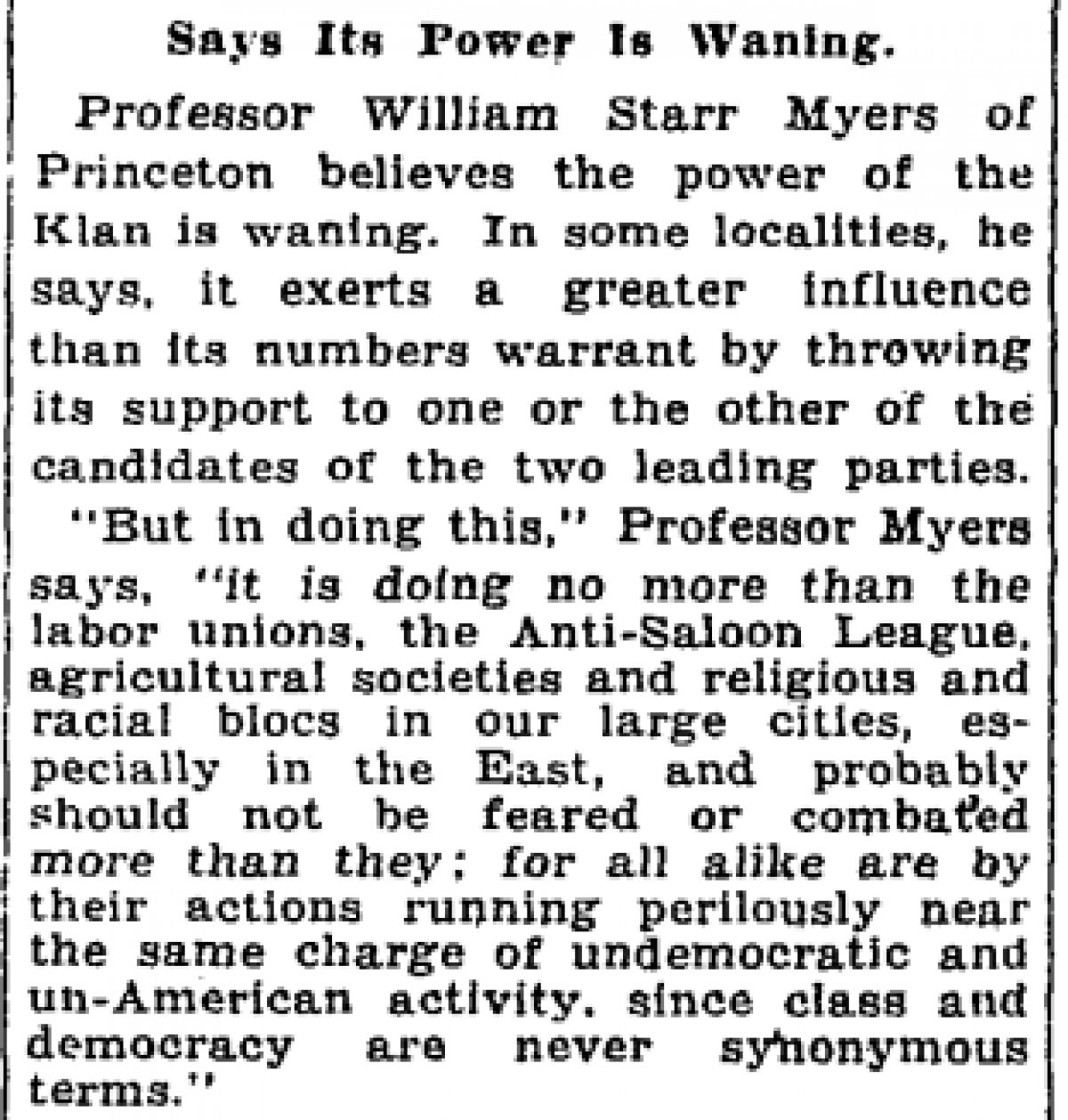
Professor William Starr Myers compares the Ku Klux Klan to labor unions and other activist organizations in the New York Times.
View Primary Sources
“The White Race Has Got To Look Out!”
Brooks Emeny (‘1924) stands out as the sole recorded student member of Princeton’s IRL chapter. After graduating from Princeton, he went on to a distinguished career in academia. An expert in American foreign policy, Emeny served as the president of the Foreign Policy Association from 1947-1953, lectured across the nation on foreign affairs, and served on the Advisory Council of the Woodrow Wilson School of Public and International Affairs at Princeton University for almost twenty-five years before his retirement and subsequent death in 1980.[28]
Although the IRL never featured Emeny as a speaker at any of their events, Emeny wrote a paper while an undergraduate on what he called “The World’s Racial Problem.”[29] In his essay, Emeny argued that “America is only a fraction of the great universal racial upheaval which exists today.”[30] His essay betrayed an overriding concern with the integrity of the white race—what he referred to repeatedly as “our race”—and the necessity of maintaining political and imperial control over non-white peoples the world over. In the wake of anti-colonial fervor and fluctuations in global power following the World War I, Emeny cautioned that white “supremacy of the world is menaced!” and also that “the white race has got to look out!”[31] Finally, he compared the world’s non-white population to a dangerous animal growing into maturity, writing:
Their interpretation of our civilization and Christian religion is not the same as ours. And we find that the cub which formerly ate from our hands, has become a lion ready to spring upon its benefactors … It is this question which will occupy the minds of the thinkers of our white race in the near future, more than any other.[32]
Emeny’s writings exhibited an internationalist sense of the “race problem” and the necessity of stemming the tide of immigration into the United States. Not only would the cultural and biological integrity of white Americans be threatened by immigrants, Emeny insisted, but so would the United States’s growing role as an arbiter of white imperial interests across the globe after World War I.
Emeny’s essay echoed The Rising Tide of Color Against White World-Supremacy, a book written in 1920 by historian, eugenicist, and Ku Klux Klan member Lothrop Stoddard, and referenced—albeit with a slight changes to the name of both author and title—in F. Scott Fitzgerald’s novel The Great Gatsby (1925). In one scene, the wealthy Tom Buchanan mentions his support for Stoddard’s ideas, an allusion to the credibility Stoddard held among American elites in the 1920s.[33] Fitzgerald, who attended Princeton briefly before dropping out in 1917, might have based Buchanan’s admiration for Stoddard on his own encounters with similarly-inclined undergraduates at the University.
Like Emeny, Stoddard lamented that World War I, what he called the “White Civil War,” was a tragic mistake and a “frightful weakening of the white world.”[34] He wrote that the greatest threat to the “white world” was not anti-colonial revolution, but rather “migrations which would swamp whole populations and turn countries now white into colored man’s lands irretrievably lost to the white world.”[35] That Stoddard’s ultimate concern was immigration is telling: his support for white world rule was closely tied to nativist fears.
Although never again expressed so explicitly, Brooks Emeny’s racist outlook extended to his scholarly work later in life. A 1935 world politics textbook intended for college classrooms that Emeny co-authored with journalist Frank Simonds addressed what one reviewer euphemistically described as the “demographic factors” underlying international politics.[36] Another reviewer of a subsequent collaboration between Emeny and Simonds, The Price of Peace: The Challenge of Economic Nationalism, balked at the authors’ “sneering at international law” and “veiled apologies for Fascism.”[37] Though Emeny made no mention of his youthful IRL activism at Princeton in an autobiographical account written near the end of his life, his early nativist views persisted throughout his work and career.[38]
Conclusion
Tracing the varying ideas of Goodrich, Conklin, Myers, and Emeny reveals a common thread: all four believed in the inherent superiority of white people and in the idea that white rule should be maintained in the United States, if not the world. Their racial animus spanned more than a century. Between Goodrich, an aged veteran who fought in the American Civil War, and Emeny, a student who would live until 1980, white supremacy remained a priority.
The fact that these four men varied widely in how they characterised the threat they believed immigrants posed—to white Americans’ morality, biology, and geopolitical dominance—reveals the extent to which white supremacy was an evolving set of ideas rather than an archaic holdover from the era of slavery. Princeton community members like Goodrich, Conklin, Myers, and Emeny were not passive recipients of the racist ideologies conceived during the antebellum era. Instead, they were active proponents of the ‘cutting edge’ of racist and nativist thought across a variety of academic disciplines, both in Princeton’s short-lived IRL chapter and their professional lives.
The activities of the Princeton branch of the IRL likely had no significant impact on the success of the Johnson-Reed Act in Congress in May 1924. Nonetheless, the organization’s very existence on campus demonstrates that nativist and racist politics played a role in Princeton’s political and intellectual ecosystem in the early 1920s. The trajectories of the group’s members further show that the people who held such beliefs could and did go on to hold respectable positions in society. Alongside Princeton’s own administrative discrimination against Jewish and nonwhite applicants in the 1920s, the emergence of the IRL helps illustrate how the far-right drift of American racial politics manifested itself at Princeton.
References
[4]
Colm Lavery, “Situating Eugenics: Robert DeCourcy Ward and the Immigration Restriction League of Boston,” Journal of Historical Geography 53 (2016): 58.
⤴
[6]
Jerome Karabel, The Chosen: The Hidden History of Admission and Exclusion at Harvard, Yale, and Princeton (Boston: Mariner Books, 2005), 135.
⤴
[10]
Mae M. Ngai, “The Architecture of Race in American Immigration Law: A Reexamination of the Immigration Act of 1924,” The Journal of American History 86, no. 1 (June 1999): 71.
⤴
[14]
Ngai, “The Architecture of Race in American Immigration Law,” 71.
⤴
[21]
“William Starr Myers,” The Washington Post and Times Herald, 29 January 1956.
⤴
[23]
Diary, 1923 July 12 – 1927 May 3; William Starr Myers Papers; Princeton University Archives, Department of Rare Books and Special Collections, Manuscripts Division.
⤴
[25]
“The Structure of Government and Its Relations to the Military Strength of the State”; William Starr Myers Papers, Box 10 Folder 4; Princeton University Archives, Department of Rare Books and Special Collections, Manuscripts Division.
⤴
[27]
William Starr Myers, “Some Present-Day Views of the Southern Race Problem,” The Sewanee Review 21, no. 3 (July 1913): 348.
⤴
[29]
“The World’s Racial Problem”; Brooks Emeny Papers, Undergraduate Papers 1921-1924; Princeton University Archives, Department of Rare Books and Special Collections, Manuscripts Division.
⤴
[33]
F. Scott Fitzgerald, The Great Gatsby (New York: Scribner, 1925), 12.
⤴
[34]
Lothrop Stoddard, The Rising Tide of Color Against White World-Supremacy (New York: Charles Scribner’s Sons, 1921), vi.
⤴
[36]
Clarence A. Berdahl, “SIMONDS, FRANK H., and BROOKS EMENY. The Great Powers in World Politics,” The ANNALS of the American Academy of Political and Social Science (July 1935): 232.
⤴
[37]
Frank L. Schuman, “Reviewed Works: The Price of Peace. The Challenge of Economic Nationalism. by Frank H. Simonds, Brooks Emeny; American Foreign Policy in the Post-War Years. by Frank H. Simonds,” The American Journal of International Law 30, no. 1 (January 1936): 174.
⤴
[38]
“Autobiography of Brooks Emeny”; Brooks Emeny Papers, Autobiography (1975); Princeton University Archives, Department of Rare Books and Special Collections, Princeton University Library.
⤴









